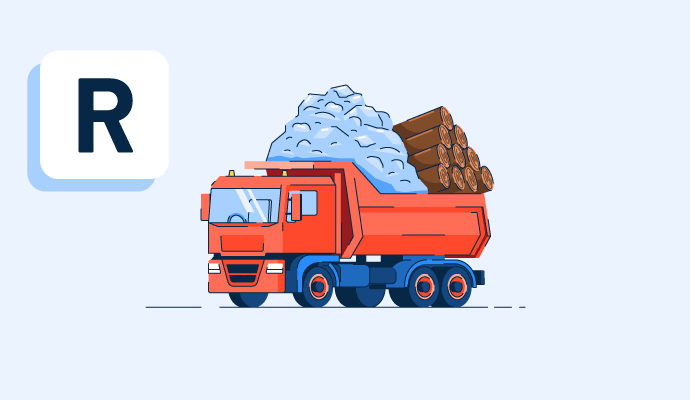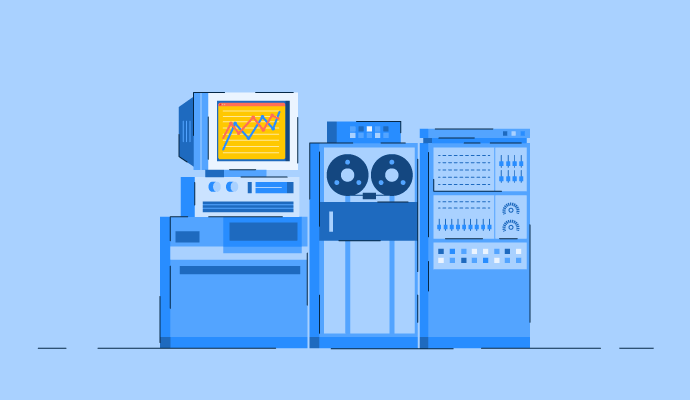What are raw materials?
Raw materials are the components, parts, and ingredients combined to manufacture a product. Examples include ore and coal in metallurgy, fabric and leather in fashion and apparel, and bolts and nails in construction.
Depending on the manufacturing type, raw materials are used according to predefined bills of materials (BOMs) or recipes. As the name suggests, recipes are used in food and beverage manufacturing, chemicals, and pharmaceuticals.
BOMs are used mostly in discrete manufacturing, such as fashion, electronics, or furniture. BOMs and recipes define which raw materials are needed to manufacture a particular product, in what quantities, and how they must be combined or assembled.
Types of raw materials
Depending on their intended use or the industry a company is in, raw materials typically fall into one of three categories:
- Parts and components: These can be assembled to form a new product and reused or sold as individual parts. For example, a laptop is made by assembling components such as a hard drive, keyboard, screen, battery, etc.
- Ingredients: Raw materials combined using formulas and recipes to create an entirely new product are called ingredients. As opposed to parts and components, ingredients cannot be sold individually. Also, when combined, they create an entirely new product that cannot be disassembled.
- Textiles: Raw materials used in fashion and apparel, such as fabric or leather, have characteristics that set them apart from other raw materials. First, they are sold in bales that vary in size and weight. Secondly, the fabric must be cut using patterns and then sewn with other materials to create the finished product.
Benefits of using raw materials
Raw materials are fundamental for manufacturing as products rely on ingredients and components for their creation. Additionally, they offer significant benefits:
- Streamlined production: The availability of suitable raw materials in the right quantities can simplify production planning and execution. Conversely, a lack of raw materials may force manufacturers to delay or cancel ongoing production cycles.
- Improved customer experience: The quality of the raw materials impacts the quality of the finished product. By using high-quality raw materials, manufacturers can improve the overall customer experience when using their products.
- Increased revenue: Although high-quality raw materials may be more expensive, they can significantly enhance the quality of the product, which usually results in more sales and brand recognition.
Impacts of using raw materials
Raw materials could positively or negatively impact the following:
- Production planning: Accurate production plans rely on raw materials to ensure that the right ingredients or components are available in the right quantities so production can commence without delay.
- Product quality: The quality of raw materials significantly impacts the quality of finished products. The quality of raw materials and finished products are directly proportional, with both aspects increasing or decreasing together.
- Profitability: Manufacturers need to use raw materials that are of good quality while balancing cost effectively. Spending too much on them may increase the cost of the product and reduce the manufacturer's profit margins.
Basic elements of raw materials
The functionality to manage raw materials in ERP systems can vary, but comprehensive raw material software typically includes the following elements:
- Metadata: This consists of the description and characteristics of the ingredients or components. This information aids in choosing suitable raw materials for specific products. It can also be used to replace raw materials with similar options that have little or no impact on the final product.
-
Availability: Raw material inventory can be challenging to track as it may be stored in multiple warehouses and manufacturing locations. Additionally, various units of measure can make inventory tracing difficult.
For instance, food ingredients can be stored in barrels or boxes of different sizes and are used in kilos or pounds, based on recipes. Some materials are perishable and can require unique storage methods like cold or dry storage while also having expiration dates.
- Supplier selection: Although many suppliers worldwide provide raw materials, not all offer the same quality or pricing. Therefore, manufacturers must choose suppliers that can provide both.
Raw materials best practices
To make raw materials work, follow these best practices:
- Choose the best options: There are usually multiple options for most components and ingredients used in manufacturing. Companies need to use the best option based on the quality and pricing of raw materials.
- Keep inventory up to date: The inventory of raw materials needs to be constantly updated so that production managers know what to rely on. Other than the physical inventory, in-transit goods also need to be tracked to ensure that the availability of materials remains constant to maintain production quotas.
- Identify replacements: Some raw materials can be replaced with similar ones without impacting the quality of the finished products. However, the costs may differ, and some components may not have the same warranty if official distributors do not sell them. It is, therefore, critical to know which replacements are compatible, cost-effective, and comply with industry standards.
Discover what business operations entail and strategies to improve them for greater success.

Gabriel Gheorghiu
Gabriel’s background includes more than 15 years of experience in all aspects of business software selection and implementation. His research work has involved detailed functional analyses of software vendors from various areas such as ERP, CRM, and HCM. Gheorghiu holds a Bachelor of Arts in business administration from the Academy of Economic Studies in Bucharest (Romania), and a master's degree in territorial project management from Université Paris XII Val de Marne (France).

